For our 30th Anniversary exhibition, Still Crazy After All These Years…30 Years of Art, Hisako Sekijima provided us Structural Discussion VI, a work made in 2016. In 1994, the first year Sekijima showed with browngrotta arts, we sold another work from the Structural Discussion series, #312, which she had made 30 years before in 1987. Even as she addresses a single theme, Sekijima’s use of varied materials and approaches makes the results of these explorations remarkably diverse.

Portrait of Hisako Sekijima at her first solo exhibition with browngrotta arts in 1994; baskets of Kudzo vine, walnut, cedar, cherry bark, hackberry shavings and willow bark. Photo by Tom Grotta. The exhibition was reviewed in The New York Times, “Cherishing the Space and the Forms that Define It,” Bess Liebenson, July 1994.
“In the 40 years I have been working with baskets, my concerns have extended beyond basket topics toward sculptural ones. Not only I have used rather common basket materials including tree barks, vines, splints of bamboo or woods, but also I have chosen extended concepts of vessel forms with negative spaces and linear constructions. Both of my aesthetic and technical ideas such as revaluing negative space and examining the natural property of materials are illustrated in my explorations into the nature and history of basketmaking. It brings me a deeper understanding of physical rules of interplay among materials’ property, constructing method and a form, while it brings me a tactility or real touch of abstract ideas of numbers/counting, time, order, and etc. With coordination of hands, spirits and sense, physical experiences and conceptual ones come together in baskets.
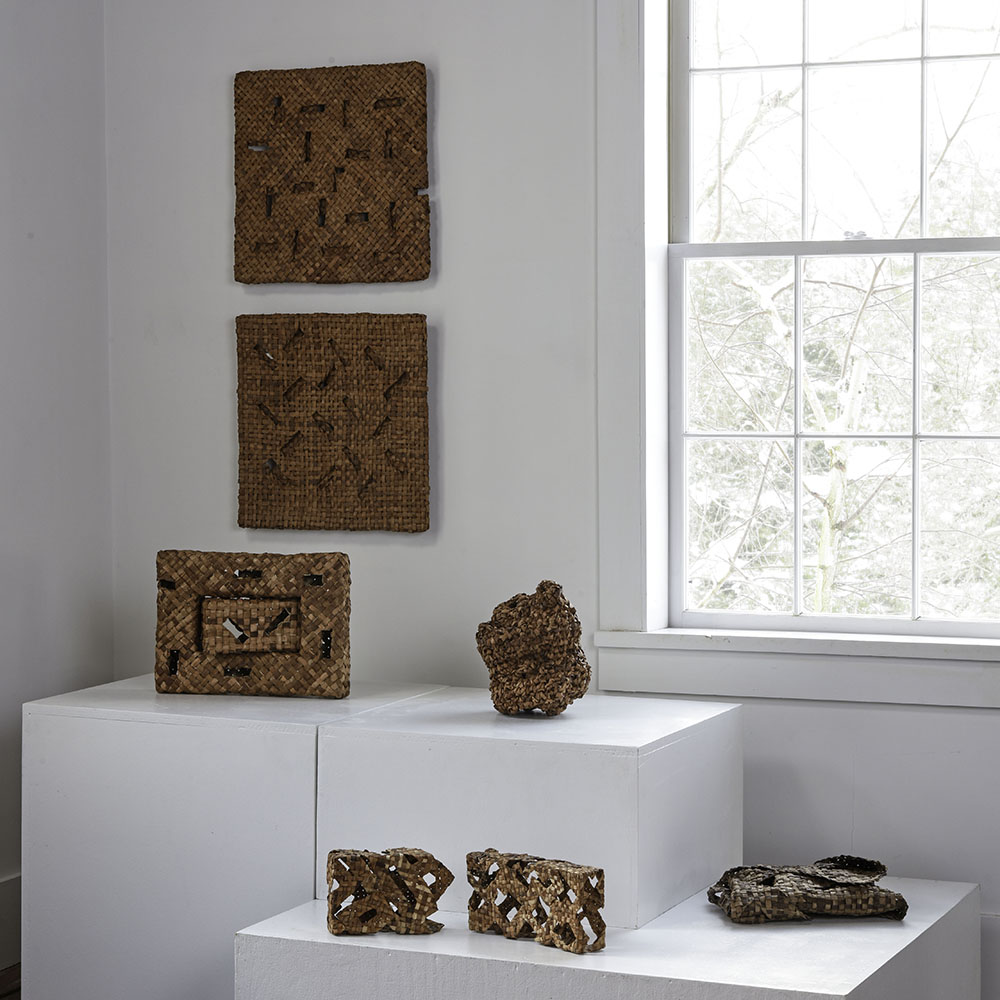
On the wall: Structural Discussion IV & V, plaited and woven cedar, 1997-98 from left to right: Structural Discussion VI, plaited cedar and walnut, 2016; Multiple Axis II, looped chamaecyparis (cyprus) and cedar, 2013; Structural Discussion I, plaited cedar, walnut, ginkgo, 1987; From 2 to 3 Dimensions V, plaited and folded walnut.


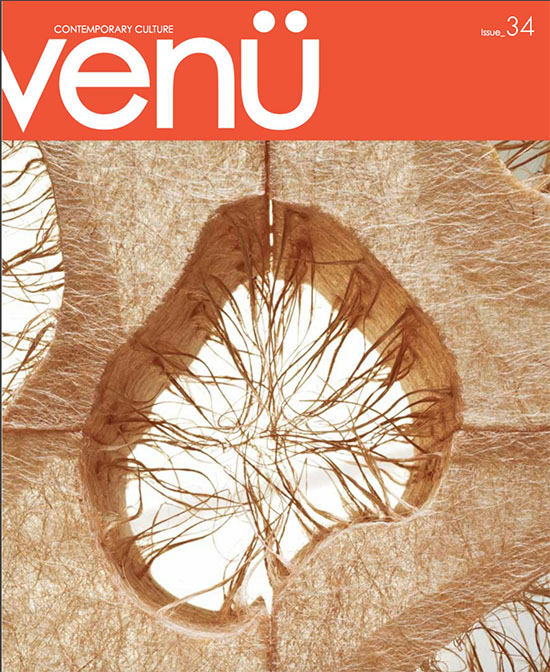

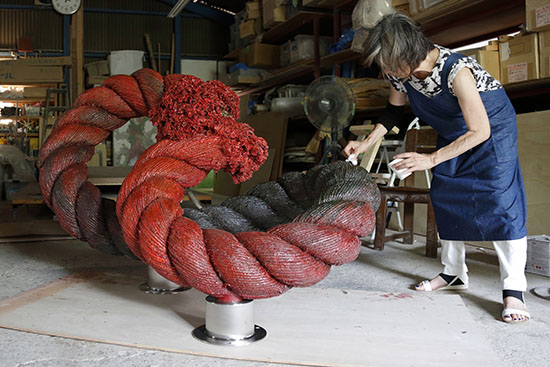

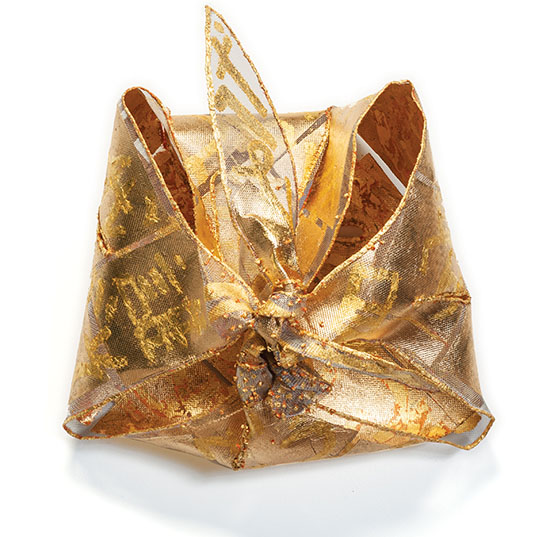

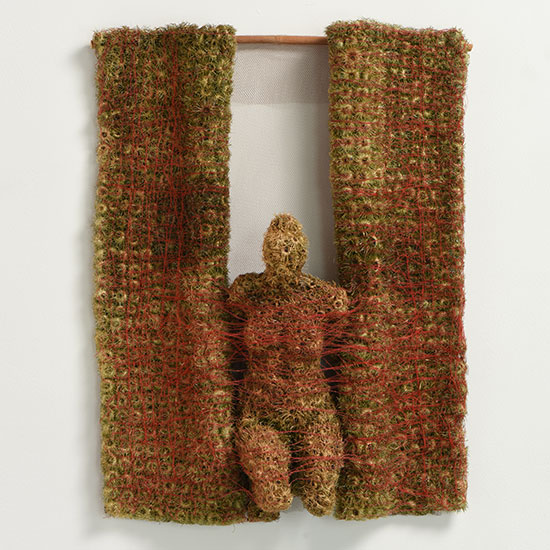
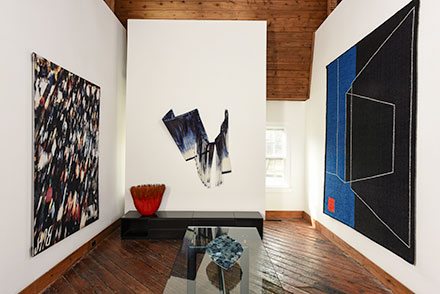
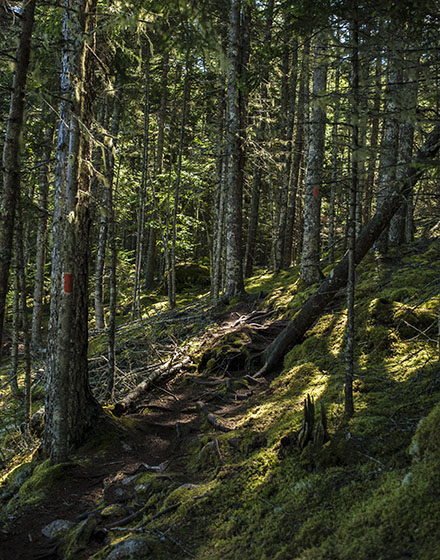

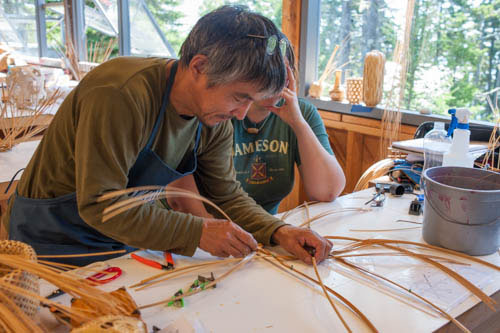
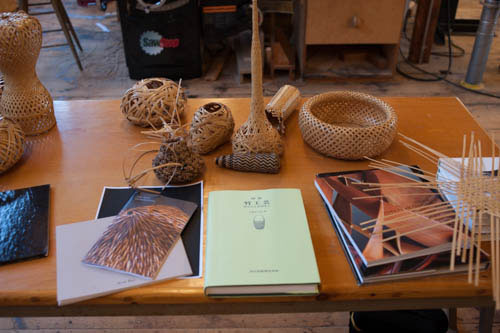
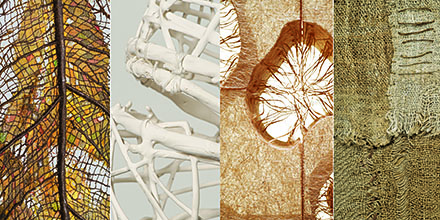
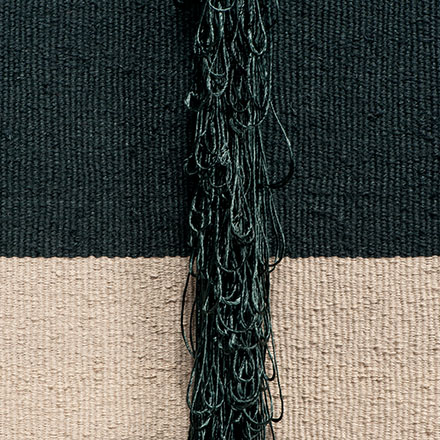
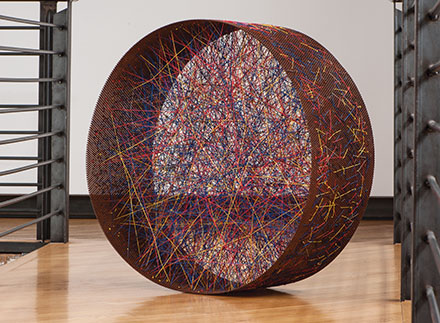
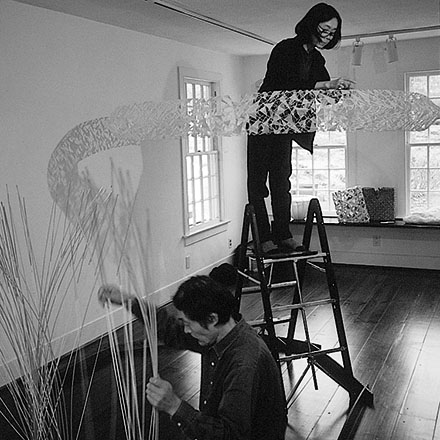
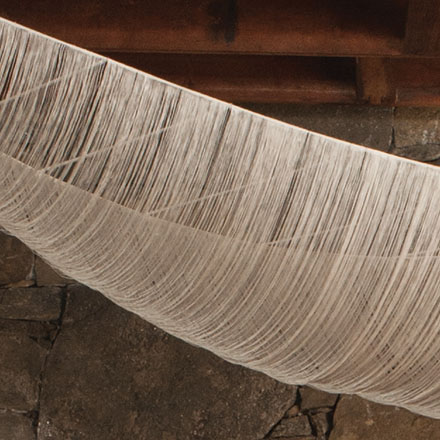
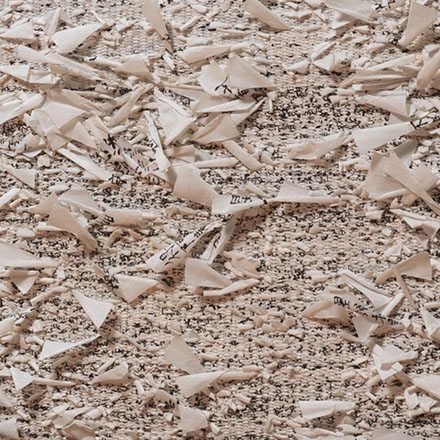
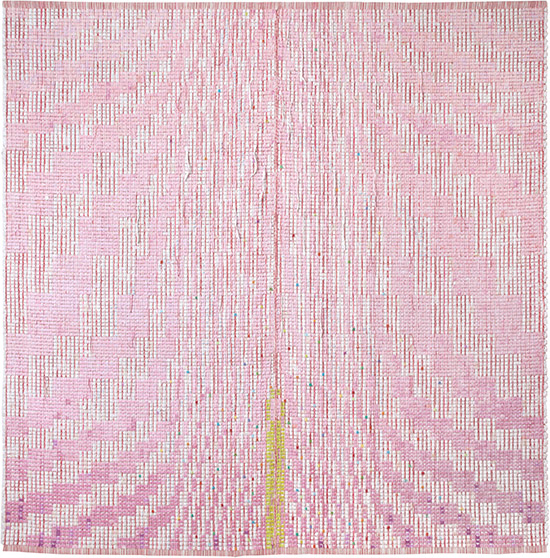
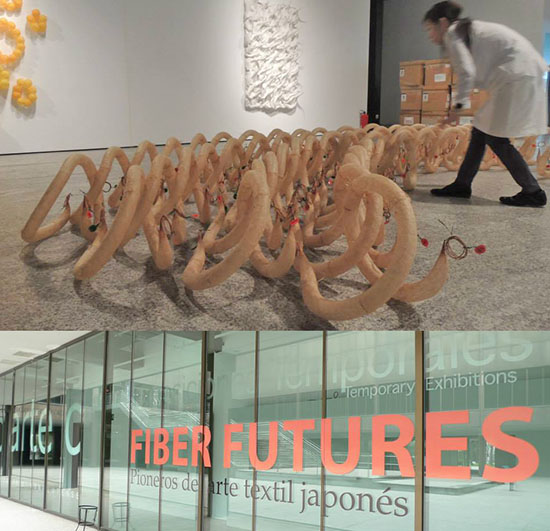
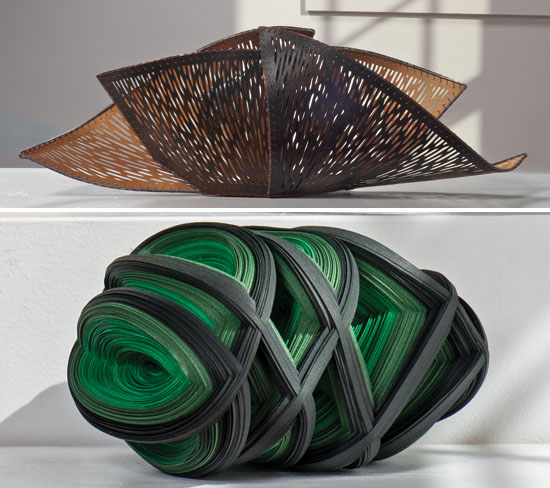
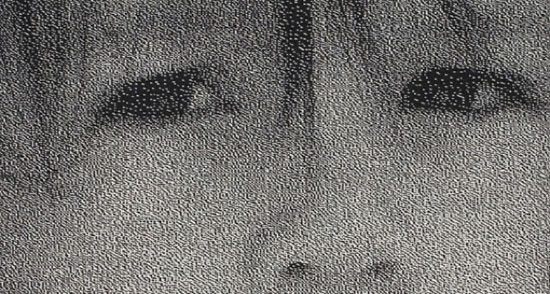

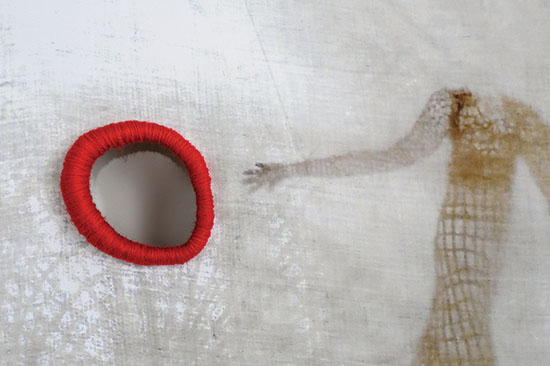

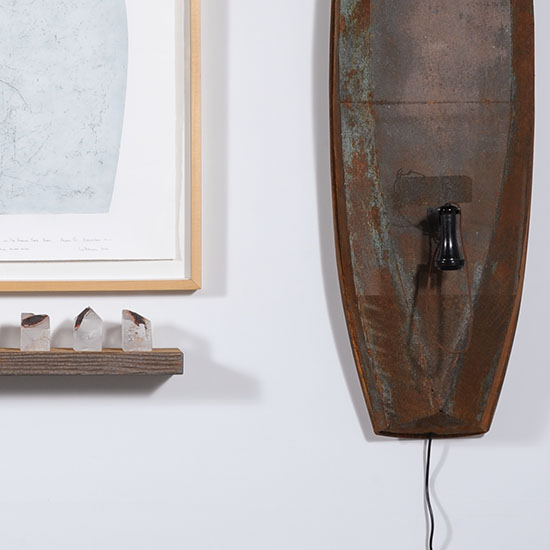
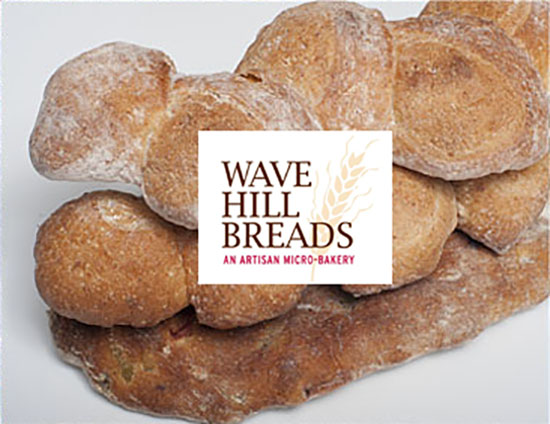
Woven Work/Woven Words — Hiding in the Weave Hits the Shelves
THE FLOW OF WATER 6 Naomi Kobayashi, paper and thread, 12.5” x 22.375” x 2”, 2008, photo by Tom Grotta
Three years ago, browngrotta arts facilitated correspondence between artist Naomi Kobayashi and author (and collector) William Bayer about the artist’s technique of weaving paper strips with thread. Bayer envisioned a character in a novel weaving a message into her work, which another character would deconstruct to de-code. Naomi provided technical advice — yes, it could be done and the message could be read, if the weaver used oil-based ink. Flash forward to 2014.
Hiding the Weave by William Bayer
Bayer’s book, Hiding in the Weave, is off the word processor and on the shelves. Written from the perspective of 18-year-old Joel Barlev, a senior at Delamere, a school geared to talented young artists, the novel plays off themes typically found in classic boarding school novels — requited and unrequited romance, alienation, rebellion, sexuality, moral dilemmas and evolving maturity. Joel, a gifted ceramic artist, finds himself falling in love with Liv Anders, a talented weaver, who observes: “You gouge your pots to show your pain to the world. I hide my pain in the weave.” It turns out there is something more tangible hidden in one of Liv’s abstract weavings, and when tragedy strikes, Joel and his two best friends, Justin and Kate, feel compelled to uncover it. Naomi Kobayashi’s work graces the cover; her art informs the content. Get a copy at browngrotta.com.